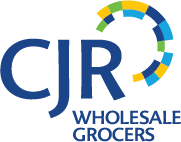The grocery distribution industry is continually evolving, driven by advancements in technology, changing consumer preferences, and emerging market trends. As we move through 2024, several key trends are shaping the way grocery wholesalers and retailers operate. At CJR Wholesale & DairyCentral, we are committed to staying ahead of these trends to provide the best service and solutions to our partners. In this blog post, we’ll explore the top trends in grocery distribution for 2024 and how they are influencing the industry.
Enhanced Automation and Technology Integration
Automation is transforming the grocery distribution landscape, improving efficiency and accuracy in various operations. In 2024, we’re seeing a significant rise in the adoption of automated systems for inventory management, order fulfillment, and warehouse operations. Advanced technologies such as robotics, artificial intelligence (AI), and machine learning are being integrated to streamline processes, reduce human error, and optimize supply chain management.
One of the most impactful advancements in grocery distribution is the deployment of robotics in warehousing operations. Automated systems, such as robotic picking and packing machines, are increasingly being used to streamline the handling of goods. These robots can quickly and accurately select items from shelves, package them, and prepare them for shipment, significantly reducing the time and labor required for these tasks.
Another impactful advancement is modern inventory management systems equipped with automation capabilities offer real-time tracking and management of inventory. These systems use sensors, RFID technology, and IoT (Internet of Things) connectivity to monitor stock levels, track product movements, and manage storage conditions. This real-time visibility allows for precise control over inventory, reducing the risk of discrepancies and ensuring that stock levels are accurately maintained.
Sustainability and Green Initiatives
Sustainability continues to be a major focus in the grocery distribution industry. In 2024, there is a growing emphasis on reducing the environmental impact of distribution operations. This includes adopting eco-friendly packaging, optimizing transportation routes to reduce carbon emissions, and implementing energy-efficient practices in warehouses.
Packaging is a critical area where sustainability can make a significant impact. Traditional packaging materials often contribute to environmental waste and pollution, prompting a shift toward eco-friendly alternatives.
Transportation is a significant contributor to carbon emissions in the grocery distribution industry. In 2024, optimizing transportation routes is a key strategy for reducing these emissions. This involves utilizing advanced logistics technology to plan the most efficient routes, consolidate shipments to reduce the number of trips, and implement energy-efficient practices in transportation fleets.
Another important impact is energy. Warehouses are energy-intensive facilities, and implementing energy-efficient practices is crucial for reducing their environmental impact. In 2024, there is a growing focus on using energy-efficient lighting, climate control systems, and refrigeration units to lower energy consumption and greenhouse gas emissions. Additionally, incorporating renewable energy sources such as solar panels is becoming more common in warehouse operations.
Omnichannel Distribution Strategies
The rise of e-commerce has led to a shift in consumer shopping habits, with many customers expecting seamless experiences both online and in-store. In 2024, grocery distributors are increasingly adopting omnichannel strategies to meet these expectations. This includes integrating online and offline sales channels, offering flexible delivery options, and enhancing the customer experience through digital platforms.
The convergence of online and offline sales channels is a cornerstone of omnichannel distribution. Consumers now expect a seamless transition between digital and physical shopping experiences. Grocery distributors are responding by creating integrated systems that unify inventory, pricing, and promotions across both channels. This integration involves:
- Unified Inventory Management: Implementing systems that synchronize inventory data across online platforms and physical stores to ensure accurate stock levels and prevent overselling.
- Consistent Pricing and Promotions: Maintaining uniform pricing and promotional offers across all sales channels to provide a consistent shopping experience and avoid customer confusion.
- Omnichannel Platforms: Utilizing digital platforms that integrate with in-store systems to streamline the shopping process and provide customers with a cohesive experience.
Data-Driven Decision Making
Data analytics is becoming a crucial tool for making informed decisions in grocery distribution. In 2024, there is a growing focus on using data to optimize supply chain operations, improve demand forecasting, and enhance inventory management. By harnessing data, distributors can gain valuable insights into customer preferences, market trends, and operational efficiencies.
Data analytics plays a crucial role in optimizing supply chain operations by providing actionable insights into various aspects of the supply chain. Advanced analytics tools enable real-time monitoring of supply chain activities, from inventory levels to transportation logistics. This allows distributors to quickly identify and address issues such as delays, disruptions, or inefficiencies.
You can also do a predictive analysis. By analyzing historical data and current trends, predictive analytics can forecast potential supply chain challenges, such as stockouts or overstock situations. This proactive approach helps in making informed decisions to mitigate risks and ensure a smooth supply chain.
Another way to evaluate a suppliers performance is to do a supplier performance analysis. Data-driven insights can evaluate supplier performance, including delivery reliability, product quality, and cost efficiency. This helps distributors make informed decisions about supplier selection and management.
Focus on Food Safety and Traceability
Food safety remains a top priority in grocery distribution, with increasing regulatory requirements and consumer expectations for transparency. In 2024, there is a heightened focus on ensuring the safety and traceability of food products throughout the supply chain. This includes implementing rigorous quality control measures, enhancing traceability systems, and ensuring compliance with safety standards.
Maintaining high standards of food safety begins with robust quality control measures at every stage of the supply chain. A key aspects to consider is conducting routine inspections of facilities, equipment, and processes to ensure compliance with safety standards and identify potential risks. This includes checking for cleanliness, proper handling procedures, and adherence to hygiene practices.
When it comes to food safety, another important key factor is auditing. Performing thorough audits of suppliers to assess their food safety practices and compliance with regulatory requirements. This helps ensure that all ingredients and products meet stringent safety standards before they reach distribution centers.
Rise of Direct-to-Consumer (DTC) Models
Direct-to-consumer (DTC) models are gaining traction in the grocery industry, driven by the desire for more personalized shopping experiences and direct relationships with brands. In 2024, more distributors and retailers are exploring DTC options to offer unique product selections and build stronger connections with consumers.
The grocery distribution industry is undergoing significant changes in 2024, driven by technological advancements, sustainability efforts, and evolving consumer preferences. At CJR Wholesale & DairyCentral, we are dedicated to staying at the forefront of these trends to provide the best possible service to our partners. By embracing automation, sustainability, omnichannel strategies, data analytics, food safety, and DTC models, we are well-positioned to support your business in navigating the dynamic landscape of grocery distribution. Partner with us to stay ahead of the curve and achieve success in this rapidly evolving industry.










